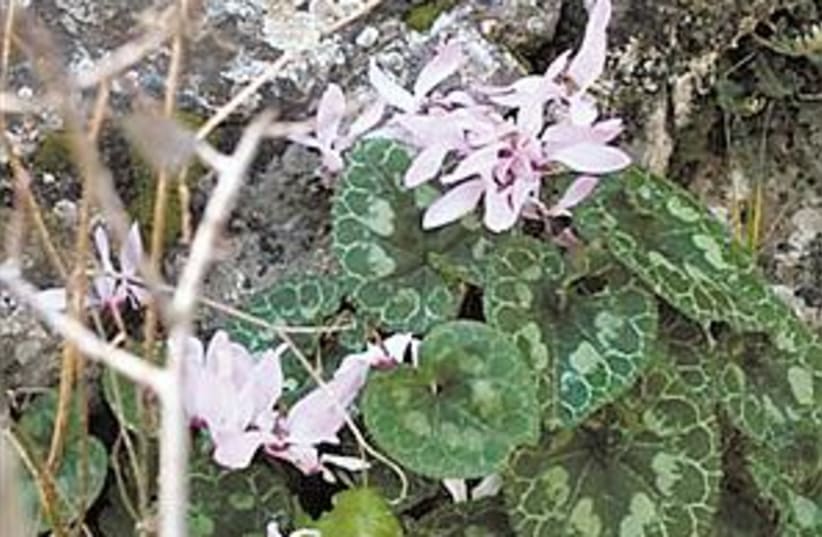The date is not found in the Torah but was determined by the sages as recorded in Rosh Hashana1:1. where the day is called the New Year of the Trees. The date was amatter of dispute between the schools of Shammai (1 Shvat) and Hillel(15 Shvat). The controversy was explained persuasively by the greattalmudic scholar Louis Ginzberg on the basis of determining when treesactually blossomed. Those in the more fertile areas belonging to thewealthy landowners who were followers of Shammai blossomed earlier,thus the first of the month was chosen by the School of Shammai, whiletrees in the less fertile ground worked by the poorer classes,followers of Hillel, did not blossom until the 15th.
Tree planting had no part in it. The tree planting is really aZionist invention, taking a traditional date and transforming it intosomething that had meaning and importance for a new time. And a goodidea it was. Today, when we are becoming so environmentally conscious(or are we?), it is an even better idea.
Trees play an important and interesting role in our tradition.The protection of trees even during warfare is specifically mentionedin the Torah. In a famous passage in Deuteronomy concerning layingsiege to a city, we are told, "...you must not destroy its trees,wielding the ax against them. You may eat of them, but you must not cutthem down. Are the trees of the field human to withdraw before you intothe besieged city? Only trees that you know do not yield food may bedestroyed..." (20:19-20).
Although the Torah does not give any explanation forthis, the great second century teacher Rabbi Ishmael stated that Godhas pity on the tree and on its fruit (Sifre Deuteronomy 203). Rabbiniclaw understood this commandment in a general way and taught that we areforbidden to wantonly destroy anything that is good and useful, notonly during a siege but at any time - bal tashhit - "do not destroy" (see Maimonides, Laws of Kings, 6:10.).
This idea of not destroying is the true basis of Judaism'sattitude toward nature and the world. We were not placed here todestroy the world by wanton disregard of the limited resources that wehave. Rather, like Adam and Eve, we have the task of tilling andtending the earth that has been given into our charge. As the Lord saidto Adam and Eve, "Fill the earth and master it" (Genesis 1:28), afterwhich God gave into their care "every seed-bearing plant that is uponall the earth, and every tree that has seed-bearing fruit" (Gen. 1:29)and placed them in the Garden of Eden "to till it and tend it" (Gen.2:15).
Trees are often used in Judaism as a symbol ofthe good human being. For example, "The righteous shall flourish as thepalm tree, they thrive like a cedar in Lebanon... in old age they stillproduce fruit..." (Psalm 92:14-15). Psalm 1 describes the good personwho does not follow the counsel of the wicked but delights "in theteaching of the Lord" as being "like a tree planted beside streams ofwater... whatever it produces thrives." The tree was chosen as a symbolbecause, unlike grass or even plants, it has permanence, is well rootedand productive for many years.
For similar reasons, the tree is also the symbol of wisdom. "Itis a tree of life to those who grasp it and whoever hold on to it ishappy" (Proverbs 3:18). The sages identified wisdom with Torah andordained that this verse be recited when the Torah is returned to theark after being read. Ironically the tree of life is one that,according to Gen. 2:22, Adam and Eve were not allowed to eat. Genesismentions specifically that "the Lord God planted two trees in theGarden of Eden," the tree of life and the tree of good and evil. Adamand Eve ate the fruit of the tree of good and evil and were banishedfrom Eden lest they eat from the tree of life. Later the Torah itselfis called the tree of life. Adam and Eve were prohibited from eatingfrom that tree, but we are supposed to be nourished from it - i.e. theTorah - all our days.
This "holiday for trees" is a wonderful opportunity to reflecton the wonder of nature, our responsibility to preserve the earth andall that grows from it, as well as to prize those things that the treesymbolizes, goodness and righteousness and the worthy life that comesfrom devoting oneself to the Torah and its ways of peace.
The writer is the head of the Rabbinical Court of the Masorti Movement and the author of several books, the most recent being Entering Torah.
